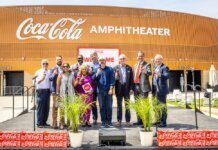
A rising tide lifts all boats.
That phrase comes up more than once in conversations with Tami Reist, Pam Swanner and Wiley Blankenship.
All three are at the helm of multi-partner groups across the state — Reist as president and CEO of North Alabama’s 16-county Alabama Mountain Lakes Tourist Association, Swanner as director of the 23-county Alabama Black Belt Adventures and Blankenship on the coast as president and CEO of the Coastal Alabama Partnership, which serves Mobile and Baldwin counties and other areas of southwest Alabama.
Each of these groups has a focus on tourism, banding sometime competitors together to bring tourism dollars to their areas.
“I tell people that we’re that added cheerleader for those 16 counties,” says Reist, who has been with Alabama Mountain Lakes for 11 years. “We want to see this region grow. We’re able to share the story of our region.”
Alabama Mountain Lakes is the granddaddy of the regional groups, formed in 1964 by then-Gov. George Wallace, who signed a bill authorizing an extra 1% of lodging sales tax in the region, with the income split between Alabama Mountain Lakes and the state of Alabama. Since then, the group’s budget has grown from $30,000 to close to $3 million, Reist says.

Alabama Black Belt Adventures came along in August 2009, the brainchild of Thomas Harris, a Hope Hull businessman and avid outdoorsman who spotted an opportunity, Swanner says.
“It’s the natural resources and the abundance of our wildlife that really is the driving tool for our region, and there had never been a collective marketing effort to promote the region as an outdoor destination to those beyond the state of Alabama,” she says. “In the beginning, we focused on hunting and fishing, but since then, we’ve expanded to include all assets of the Black Belt, including birding, camping, hiking, whitewater rafting and more.”
The outdoors, specifically ecotourism, is also a focal point of Coastal Alabama Partnership, formed in 2012.
“The vision statement was for coastal Alabama to become a competitive destination recognized around the world as THE place to work, live and play because of our unique quality of life,” says Blankenship, who joined CAP soon after its founding.
Tourism is one of five CAP initiatives, which also include policy and planning, infrastructure, the seafood industry and insurance issues. “We focus on these areas because those are the core areas that we have to be sure are trucking in the right direction or this region can’t progress and compete,” Blankenship says. “Tourism is one of the best ways to tell our story.”
Ecotourism — travel centered around sustainability and a region’s natural resources — is something that can complement convention tourism and beach tourism, both of which are already strong on the coast.
“This, hopefully, will give our tourism organizations more to share with people,” Blankenship says. “We’re giving our tourism groups the tools and the information and the plan to be able to tell those stories.… Our tourism organizations are all on the same page with ecotourism.”

Both Alabama Mountain Lakes and Alabama Black Belt Adventures are constantly creating tourism trails, publications and other things that help make tourism in their area regional rather than site-specific.
Alabama Mountain Lakes, for instance, touts trails for wine, murals, craft beer, train depots and churches (the Hallelujah Trail), among others. The newest trail is the Agriculture Adventures Trail, pointing visitors to orchards, farms and wineries in the region.
Reist’s north Alabama group has also created a podcast (“Unexpected Adventures”), a book placed in hotel rooms and other lodging that tells North Alabama stories, a wedding venue magazine, online retirement guide and other efforts that tout all the region has to offer.
“We’re here to enhance efforts,” Reist says. “We’re not going to be their marketing director, but we’re going to help them market what they have.”
A region like the Black Belt is a prime location for a regional marketing group like Alabama Black Belt Adventures, Swanner says.
“If anybody can benefit from it, it’s the Black Belt region, the reason being that there are very few marketing dollars across the region,” she says. “That’s why people in this region are willing to come together for a common cause. They realize they don’t have the marketing dollars to attract visitors, so to be competitive, we have to pool our resources and work together toward that common goal.”

One of Alabama Black Belt Adventures’ recent efforts is the Flavors of the Black Belt, featuring locally made food items in the region, Swanner says. “Food is big attraction when it comes to tourism, so we’re trying to capitalize on that.”
The groups often take cues from Alabama Tourism and its director, Lee Sentell. For instance, both Alabama Black Belt Adventures and Alabama Mountain Lakes have their own mural trails, building on the statewide mural trail created by the tourism department.
Blankenship says he often works with the groups headed by Reist and Swanner.
“There’s an exchange of ideas, a collaboration,” he says. “These three organizations are trying to connect the dots around the state…. We all should be working toward the same goal. Those resources that come into the state through tourism get redistributed, and the bigger the pie grows, everybody gets a return on it.”
Swanner says all three of the regional groups are working in tandem to boost Alabama tourism.
“We draw people to our regions to spend their money to generate revenue for the people we serve,” she says. “When that happens, it also supports the state.… While we all have our particular boundaries that we serve, we all three work collectively together across the state.”
Alec Harvey is executive editor of Business Alabama, working from the Birmingham office.
This article appears in the February 2024 issue of Business Alabama.



